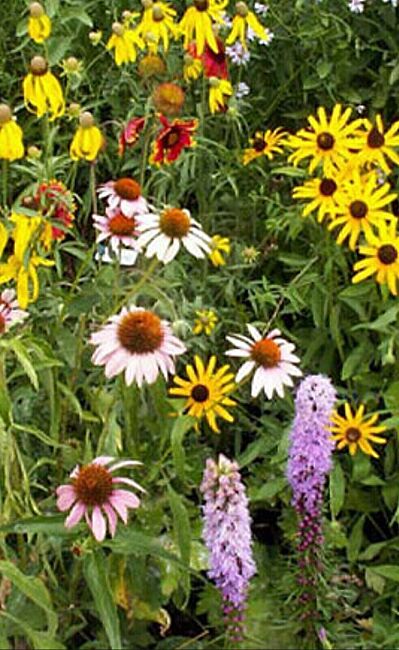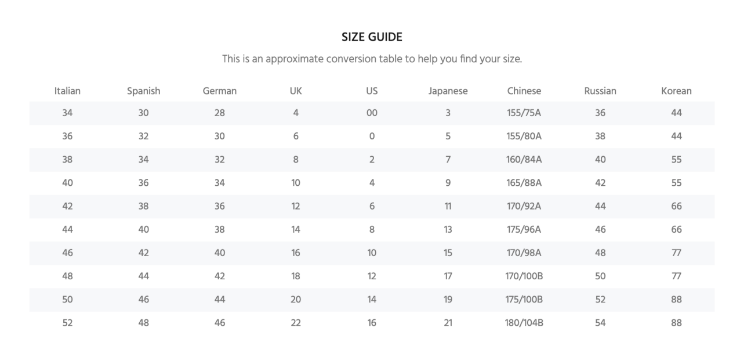SONGBIRD BLEND Perennial/Annual Wildflower Mix 20 Species Non-GMO 350+ Seeds 2 grams of Seed
PRODUCT INFORMATION
- Songbird Blend Wildflower Seed Mix 20 Species
- Turns your backyard into a colorful bird sanctuary.
- This colorful, well-balanced mix produces colorful blooms throughout the growing season.
- When the blossoms fade, substantial seed heads remain to attract popular songbirds including finches, grosbeaks, cardinals, and many more.
WHAT'S IN THIS MIX?
- Annual Phlox
- Black-Eyed Susan
- Blue Flax
- Calendula
- California Poppy
- Cornflower
- Four O?Clocks
- Indian Blanket
- Lance-Leaved Coreopsis
- New England Aster
- Partridge Pea
- Plains Coreopsis
- Prairie Coneflower
- Purple Coneflower
- Purple Prairie Clover
- Shasta Daisy
- Sulphur Cosmos
- Sunflower
- Sweet William Pinks
- Gayfeather
MIX DETAILS
Annual Phlox
Annual phlox is an early-season, all-star plant that makes a great addition to containers or entryway plantings where its sweet fragrance can be enjoyed. The mounding habit of low-growing annual phlox blooms in cheerful and bright shades of purple, pink, red, and white. Keep an eye out for winged visitors near annual phlox plantings. This spring bloomer is an especially welcome sight to pollinators that are active in cool weather months, including bees, butterflies, and hummingbirds.
Black-Eyed Susan
Black-eyed Susans are charming, carefree North American natives that are perfectly at home both in our gardens and in our meadows. All have daisy-like flowers with sultry dark ?eyes? and brightly-colored petals which emanate pure joy.
Blue Flax
Blue Flax (Linum Perenne) - Blue Flax is a perennial flower which will bloom the second year when grown from wildflower seed. It grows from tough, expanding clumps, and produces little pastel blue flowers, 1/2 - 1 inch across that bloom on light, graceful arching branches. Each bloom only lasts a day, but a new flower will open each day to take its place. It is very pretty! It will grow in all regions of North America, and it prefers full sun, and loose, dry soil, but it is very adaptable.
Calendula
The brightly coloured flowers are cheerful in borders whatever the weather. Award of Garden Merit. Drought resistant. Calendula flowers are edible and ideal in salads.
California Poppy
Although California Poppies are famous for illuminating entire hillsides on the West coast, their bright orange blooms can be planted and enjoyed almost anywhere. These deer resistant annuals flower from spring all the way into summer and will often re-bloom again in the fall. Native, easy to grow and tolerant of most soils.
Cornflower
A favorite annual in meadows from Maine to California, Blue Cornflower adds true blue blooms to the summer garden or meadow. Also known as Bachelor Button, silver foliage offsets its blue blooms tremendously and attracts birds (especially American goldfinches) with its seed. Blue Cornflower is extremely easy to grow and is gorgeous planted on its own or paired with other colors of Cornflower.
Four O?Clocks
Bright, colorful blooms create a statement in the spring and summer garden, blooming in all shades of pink, red, yellow and white. Growing to be about 12-36?, this Four O?Clock mixture is an annual but the roots can be lifted in the fall, stored during winter, and re-planted the next spring. This variety is easy to grow and prefers full sun.
Indian Blanket
Also known as Blanket Flower, this native wildflower adds bold, fiery color to the summer garden or meadow. Growing to be about 12-24? tall, this bold beauty is perfect for the front of a meadow or even for adding quick, easy color to a small space garden. Plant Blanket Flower in full sun and enjoy a burst of bright, red and yellow blooms in the summer garden.
Lance-Leaved Coreopsis
Coreopsis (Coreopsis Lanceolata) - Grown from flower seeds, this is a reliable perennial that has a long bloom season. Commonly called Lanceleaf Coreopsis, it is native to a large portion of the United States and is golden colored and a great performer. It can be used in many natural settings, beautification of fields, and in the flower garden as well.
New England Aster
The violet daisy-shaped blooms pair beautifully with its honey yellow centers and forest green foliage. This native wildflower is easy to grow and compact, making it a great choice for containers, borders and small-space gardens. New England Aster bursts into bloom in the late summer, providing much-needed color and vital nectar for pollinators right when much of the garden has finished for the season. (Aster novae-angliae)
Partridge Pea
This legume provides lovely, bright yellow blooms in the summer. The cheerful flowers attract hummingbirds, butterflies, and other wildlife. Annual. (Chamaecrista fasciculata)
Plains Coreopsis
This native annual illuminates the garden or meadow with fantastic clusters of bi-color blooms, all the way from summer into fall. Plains Coreopsis makes for gorgeous cut flowers and can be grown in almost any sunny spot, from Maine all the way to California.
Prairie Coneflower
The droopy, lemon-yellow daisy that's native to the plains. Tough, useful plant for full sun in dry areas. Perennial.
Purple Coneflower
Purple Coneflower, also called Echinacea, is famous across the country for its stunning purple flowers and golden center cones. A perennial butterfly and bee magnet, this native wildflower is extremely easy to grow and looks equally at home in the garden, meadow, or vase. Leave your Purple Coneflower planting in place over the winter to attract goldfinches and other songbirds.
Purple Prairie Clover
This species can turn the plains purple to the horizon. Great for dry areas. To 3 ft, mid-summer bloom. Perennial.
Shasta Daisy
Shasta Daisies boast huge white blooms, sunny yellow center disks and glossy green foliage and best of all, they flower for the entire summer season. Perky and cheerful, Shasta Daisies are spectacular in a meadow, wildflower garden, or when cut for bouquets. Long-lived perennials, these wildflowers will return with enthusiasm each year.
Sulphur Cosmos
The perfect addition to any sunny meadow or garden, Sulphur Cosmos light up the mid-season garden, blooming a stunning orange and yellow all the way into the fall. Sulphur Cosmos are extremely easy to grow in any region and attract a variety of hummingbirds and butterflies to the garden. The bright blooms also make for gorgeous cut bouquets!
Sunflower
Beautiful in every garden and the seeds are the best for goldfinches!
Sweet William Pinks
Spectacular, multi-colored blooms add beautiful color to the summer garden or meadow. Wild Sweet William grows in sandy, clay or loamy soil conditions and grows to be about 12-24? tall, making it an extremely versatile variety. This variety is easy to grow and the colorful blooms make for fabulous summer bouquets.
Gayfeather
Gayfeather plants launch radiant rockets of fluffy flowers from July to September. Blooms attract countless butterflies and provide long-lasting fresh cut or dried flowers. Gayfeathers are hardy perennials which tolerate poor soil, heat, humidity, and severe winter weather.
WILDFLOWER MIX PLANTING INSTRUCTIONS
WHEN TO PLANT WILDFLOWERS: When to plant wildflower seeds largely depends on the climate and rainfall patterns in your area as well as the type of seeds you are planting. In cool climates, planting wildflower seeds in spring or early summer is ideal since temperatures are warm enough for germination but not so hot that it?s difficult to keep seeded areas moist. Planting in summer is not recommended since it is difficult to keep seed beds continually moist for the first 4-6 weeks. The hot summer sun tends to dry the soil out too quickly.
Wildflower seeds can also be planted in fall in cool climates. Dormant fall wildflower plantings should be late enough so that seeds do not germinate until spring. These must be done when air and soil temperatures are too low for germination, typically after several freezes but before there is snow cover. The seeds will lie ?dormant? in the soil until spring when warmer temperatures and moisture are available. Soil expansion and contraction during the winter can also improve seed-soil contact (cold stratification). Perennials can also be sown in early fall provided that there are at least 10-12 weeks of growing time before the plants go dormant for the winter. This amount of time generally allows enough root growth for plants to survive the winter.
WHERE TO PLANT WILDFLOWERS: Though many wildflowers do tolerate some filtered shade, and a few actually thrive in it. The vast majority are definitely sun lovers. Wildflowers will generally sprout in all but the most difficult conditions. This means that pampering your site with fertilizer or rich sod is not usually necessary.
HOW TO PLANT WILDFLOWERS: Clear the area and work the soil as best you can before planting your seeds.
We recommend mixing your seeds with sand - 2 parts sand to 1 part seeds. This allows for a more even distribution and also provides a convenient way to mark which portions of the site have been seeded and which have not. For a smaller area, you can hand-broadcast the seeds. After the seeds have been sown, lightly compress the seeds into the soil about 1/2" to protect from birds and wind.
MOISTURE REQUIREMENTS: All seeds, including wildflower seeds, need ample moisture to germinate and to develop into healthy seedlings. Best results will be obtained by soaking the planted areas thoroughly and maintaining consistent moisture for 4-6 weeks. Afterwards, watering can be gradually reduced over several weeks. In non-irrigated situations, plant in the spring or before periods of anticipated rainfall.
HOW TO CARE FOR WILDFLOWERS: Although Wildflowers are pretty easy to take care of, there are some steps to keep it looking beautiful. Regularly weed to ensure your wildflowers are getting the nutrients they need. Water your plants during dry spells. Deadhead blooms that are spent to encourage new growth.
WHAT TO EXPECT FROM YOUR WILDFLOWER GARDEN: Most of our wildflower seed mixes contain annual, biennial and perennial species. Please read the mix contents. The annuals are included to assure maximum color during the first season and to act as a nurse crop for the slower-growing perennials. Annuals germinate quickly when conditions are favorable, providing a quick ground cover and competition against weeds. Most perennial and biennial species begin to bloom the second season, but not as profusely as annuals. Therefore, wildflower plantings look noticeably different after the first year.
Free shipping on all orders in the USA.
Our amazing support team is here to help. Text us at 678 316 0940 and get an instant response
Your Payment is Secure and So is your Purchase. Simply return it within 30 days for an exchange.
Grab a hosting plan for that small business or personal website. Fast Setup, great speeds, low prices. Managed Hosting Too.Text us at 678 316 0940














